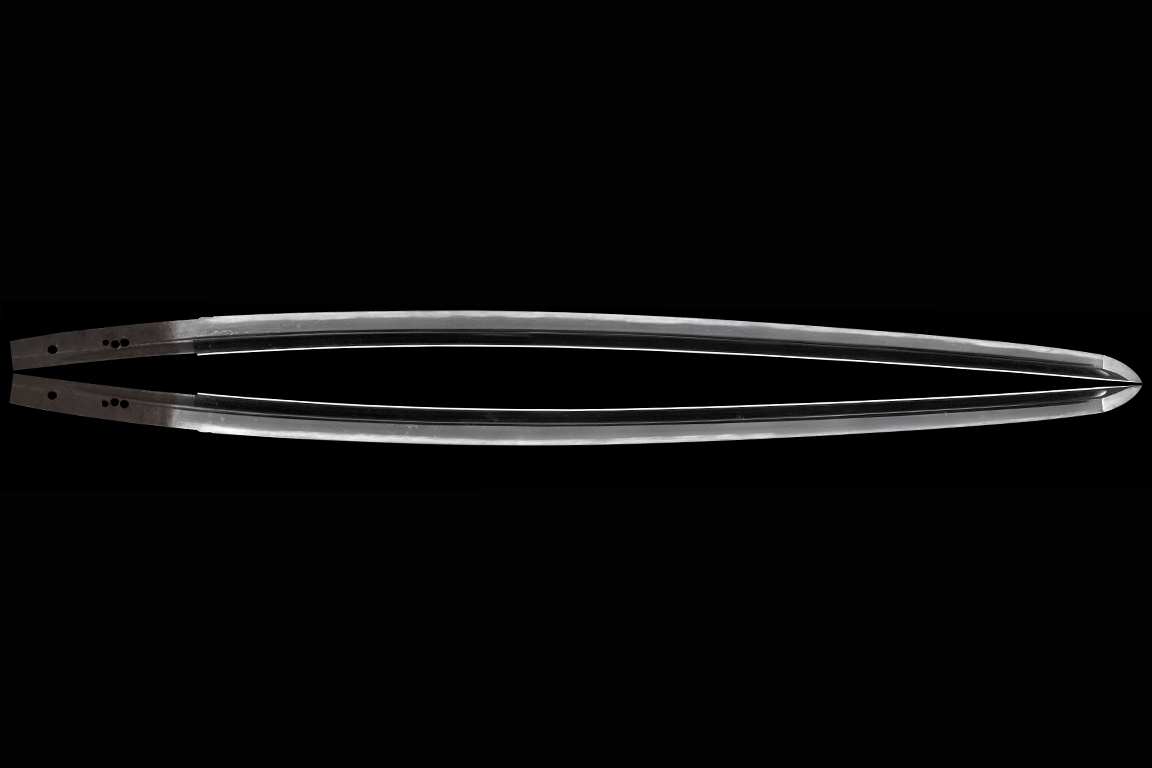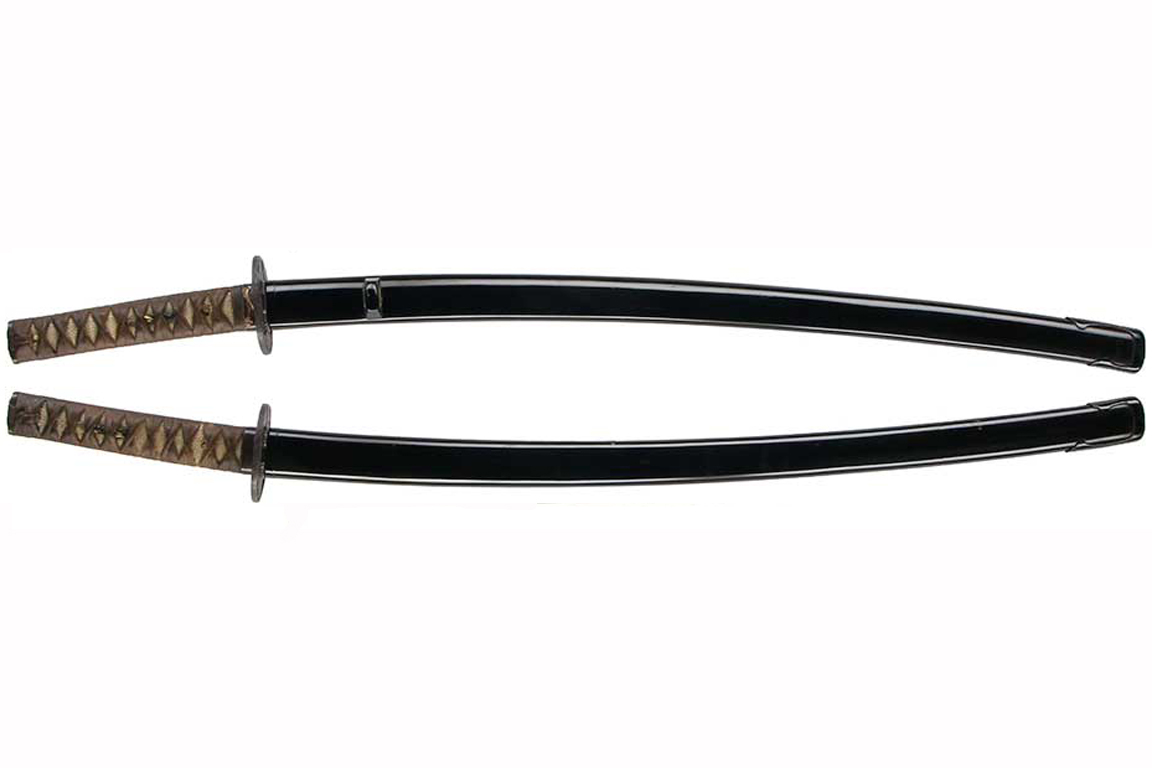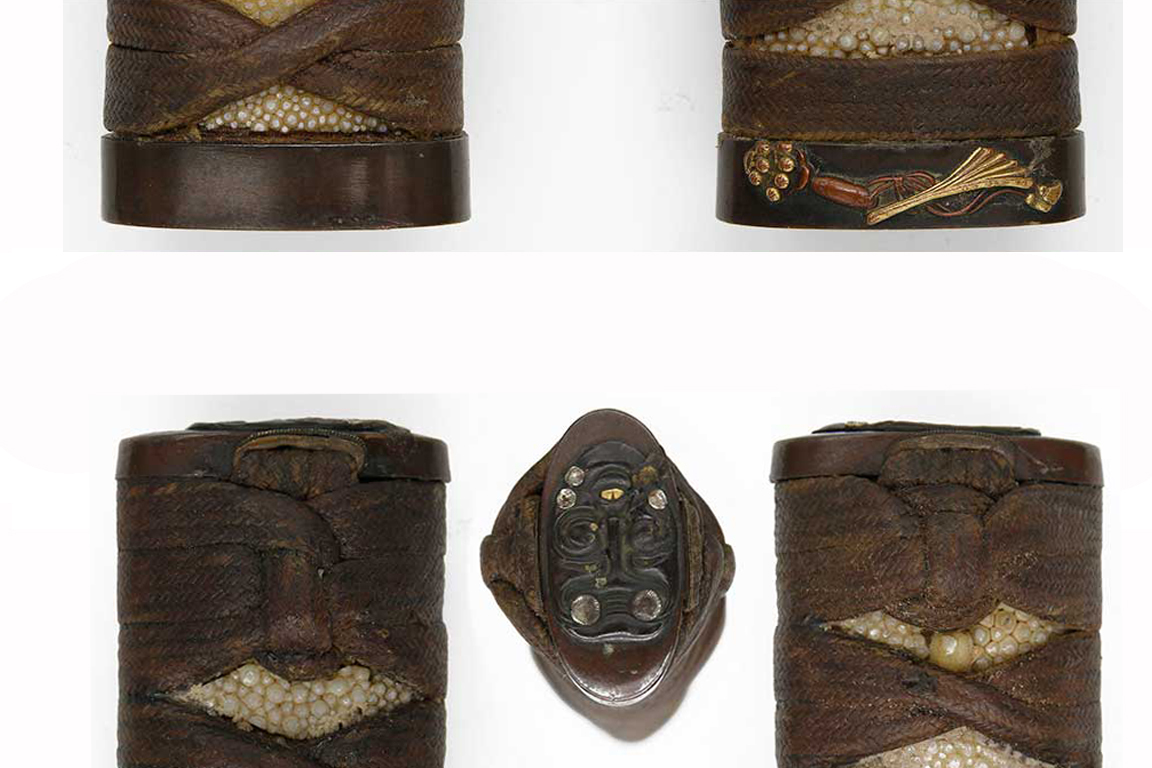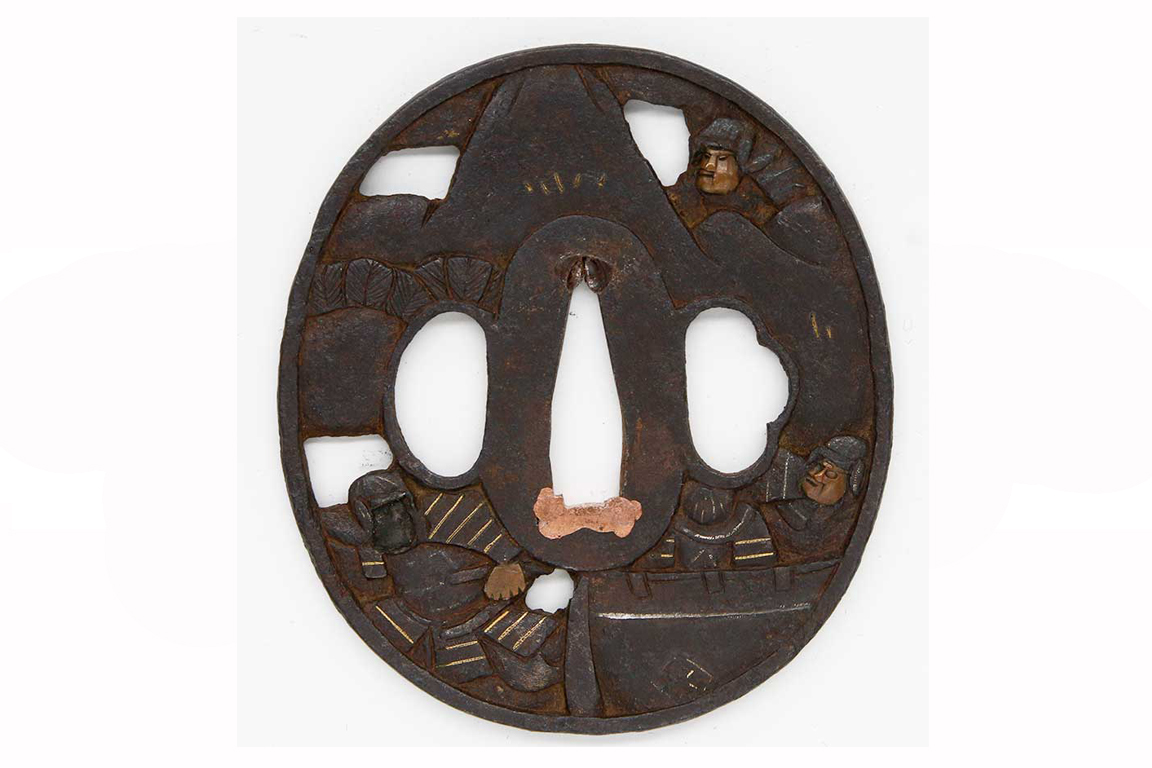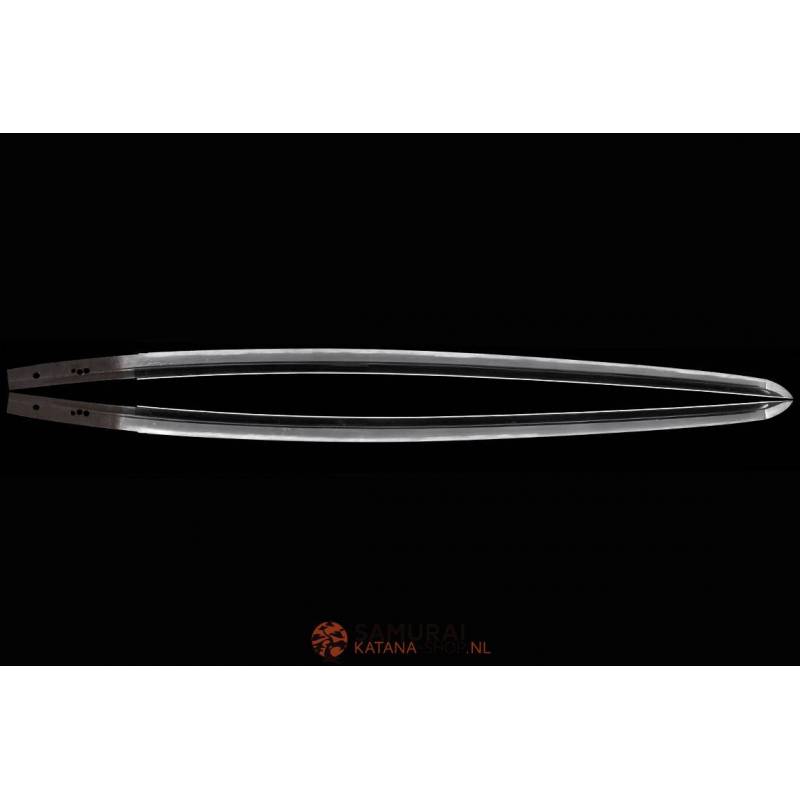


















An antique koto Katana with NBTHK Hozon from the Nanbokucho period (+/- 1387) with an appealing Koshirae and beautiful ko-itame hada with suguha and gunome midare hamon as a traditional sword could only be forged in ancient Japan.
Sold!
Mumei Den Ecchu Mitsuyuki Katana + NBTHK
An antique koto Katana with NBTHK Hozon from the Nanbokucho period (+/- 1387) with an appealing Koshirae and beautiful ko-itame hada with suguha and gunome midare hamon as a traditional sword could only be forged in ancient Japan.
In the Nanbokucho period, Japan was going through a tumultuous time as the imperial court was split into two sides (south and north). Many samurai were used in the many conflicts and longer swords were often used. That is also the reason that this sword was shortened later, as you see with the majority of swords from this period.
An antique Nihonto of the Echizen Rai school. Echizen-Rai was a group of swordsmiths in the late Nanbokucho period. The founder of Echizen-Rai was Chiyozuru Kuniyasu. From the NBTHK this Mumei sword has been assigned to Ecchu Mitsuyuki. This was a student of Rai Kuniyuki and son of Kuninaga. These smiths lived in Echizen.
Buy a true Japanese sword that really belonged to the samurai. This sword certainly went through many events before it came into my possession. A real antique sword from Tamahagane is still in excellent condition despite its age, this sword dates from 1387.
A nice deep sori as was usual at the time. A mumei tongs with suriage. The leaf feels particularly pleasant due to the Bo-Hi and Soe-Hi. The leaf is very lively with the Ko-Itame hada and many veins. The attractive suguha hamon in the base with in ko nie deki and notare and gunome midare parts. In the leaf you see sunagashi and kinsuji in the ha and influences from the Yamashiro and Soshu den schools.
The nakaga is equipped with 4 mekugi-ana by replacing the tsuka so that the balance of the sword still feels very good.
Koshirae
Still authentic koshirae from this period. Despite its age, the round iron tsuba with battle details is made with an eye for detail.
The fuchi and kashira show a Noh mask and tools that were commonly used at the time. These are all finished in copper, silver and gold details.
On the menuki you can see a bird with a branch engraved with gold color.
The graceful kashira in two colors and well-finished signed seppa clearly indicate that this sword has been expertly finished and has rightly obtained the NBTHK papers in its entirety.
Specifications:
Nagasa: 63.5 cm
Sori: 1.6 cm
Width at the hamachi : 2.54 cm
Width at the Kissaki : 1.80 cm
Kasane : 5.3mm
Weight: +/- 460 grams
A unique opportunity to buy a one-off real Japanese Samurai Sword. A unique and beautiful piece of history from Japan and what an honor to be able to sell this. This Nihonto deserves a place somewhere where it will be treated with honor and respect.
Apart from the fact that this is a great sword to display in your home, I can tell you with certainty that it is a good investment and will hold its value. The NBTHK has provided this sword with the necessary papers. This Nihonto is equipped with NBTHK Hozon Token papers.
You can read more about that here, if a katana gets a Hozon certificate, this is already exceptional
Including Oshigata. Oshigata is a drawing of the blade that records all metallurgical activities of the blade so that a good picture of the unique katana is created.
This is an antique sword and is therefore subject to the test of time and will therefore be visible in some places.
Of course provided with NBTHK Hozon Token papers which guarantee authenticity.
Never touch the katana with bare hands
Do not breathe in the direction of the blade
Do not rest the Katana on the kissaki
When indicating the katana, do not point the point and the edge towards the indicated person
When throwing up the katana it is advisable to do this in the saya
